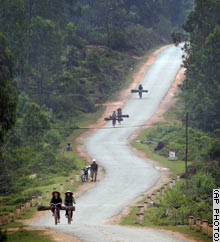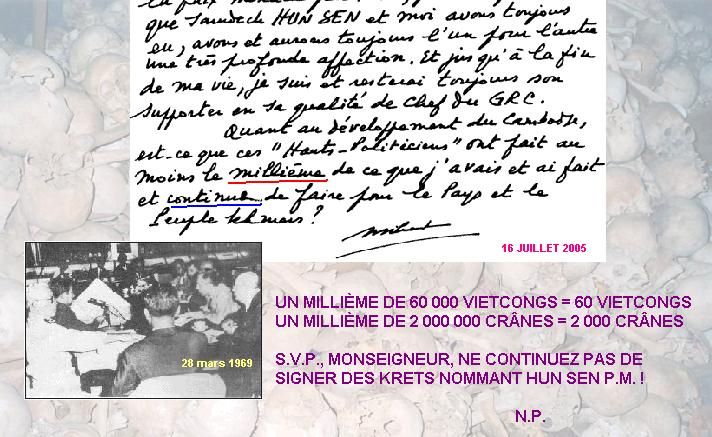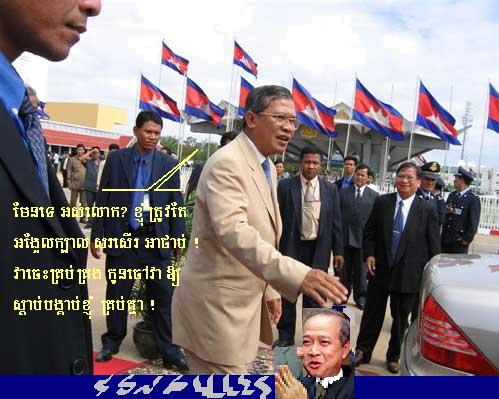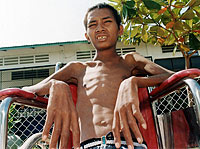China
pledges US$400 million in aid and investment for Cambodia
PHNOM PENH, Cambodia (AP) - Cambodia's foreign minister said
Friday that China has pledged more than US$400 million (euro335
million) in aid and investment to the impoverished country for projects
including a hydropower plant. The agreements were signed last week when
Prime Minister Hun Sen held talks with Chinese Premier Wen Jiabao on the
sidelines of a regional summit meeting. The meeting "has resulted in
more than US$400 million for our nation," Foreign Minister Hor Namhong
told reporters. "This is colossal."
China's pledges include a US$300 million (euro250 million) investment to
build a hydropower plant in southwest Cambodia, Hor Namhong said.
Cambodia in May awarded a state-run Chinese company the contract to build
the plant, which will produce 180 megawatts of electricity.
China will also provide more than US$40 million (euro33.5 million) to build
a new office complex for Cambodia's prime minister and US$60 million
(euro50 million) to purchase patrol boats to combat smuggling and
drug trafficking. China will also give Cambodia 200 water pumps to irrigate
rice paddies and 30 fire engines, the foreign minister said.
"This shows that our international cooperation with China in particular
keeps growing and expanding for the benefit of our country," Hor Namhong
said. It was not clear how much of the package would consist of grants
or loans. Beijing in recent years has given Cambodia millions of
dollars in aid and pledged to write off all of the country's past debts.
Hun Sen met with Wen on the sidelines of the summit of leaders of the Greater
Mekong Subregion, which includes China, Thailand, Vietnam, Laos, Cambodia
and Myanmar. The group's aim is to boost trade and tourism across their
borders and form a six-nation hydropower energy network using the Mekong
River, the vast waterway that links the member countries.
[Copyright
2005 The Associated Press]
|
|
Aid reveals Japan's grand
designs for Asia
MEKONG BASIN WORK SEEN AS PREPARATIONS
By RALPH JENNINGS
KUNMING, China (Kyodo) - Japan's recent $1 million technical assistance
grant to upgrade a coastal transit corridor from Vietnam to Thailand looks
at first like typical governmental largess, a slice of the hundreds of
millions of dollars Japan gives to developing Asian countries. But to Southeast
Asia, the grant indicates again that Japan has strategic economic designs
on the five countries that make up the 200-million-strong Mekong
basin -- Cambodia, Laos, Myanmar, Thailand and Vietnam -- according
to officials at the Second Greater Mekong Subregion Summit in Kunming,
China.
The
two-day summit ended Tuesday. Japan probably sees Southeast Asia as an
export market, a place to find natural resources and to develop tourism,
said Suranand Vejjajiva, a minister at the Thai Prime Minister's Office.
"Not only Japan, but I think other investors from other areas will
be much interested in this area if we can really integrate ourselves,"
he said after signing trade agreements for fast-track border-crossings
with Cambodia and Laos. Japan's technical assistance grant, which will
be channeled through the Asian Development Bank in September, will
pay for 10 months of feasibility studies and environmental impact reports
on new bridges, tunnels and road work that will improve the connections
between the two countries via the Cambodian coast.
The
highway must skirt a national park in Vietnam and be upgraded at the Vietnam-Cambodia
border. Japanese official development assistance loans are also helping
to build a 1,500-km east-west highway from Danang on the Vietnamese
coast across to Mawlamyine on the coast of Myanmar. |



